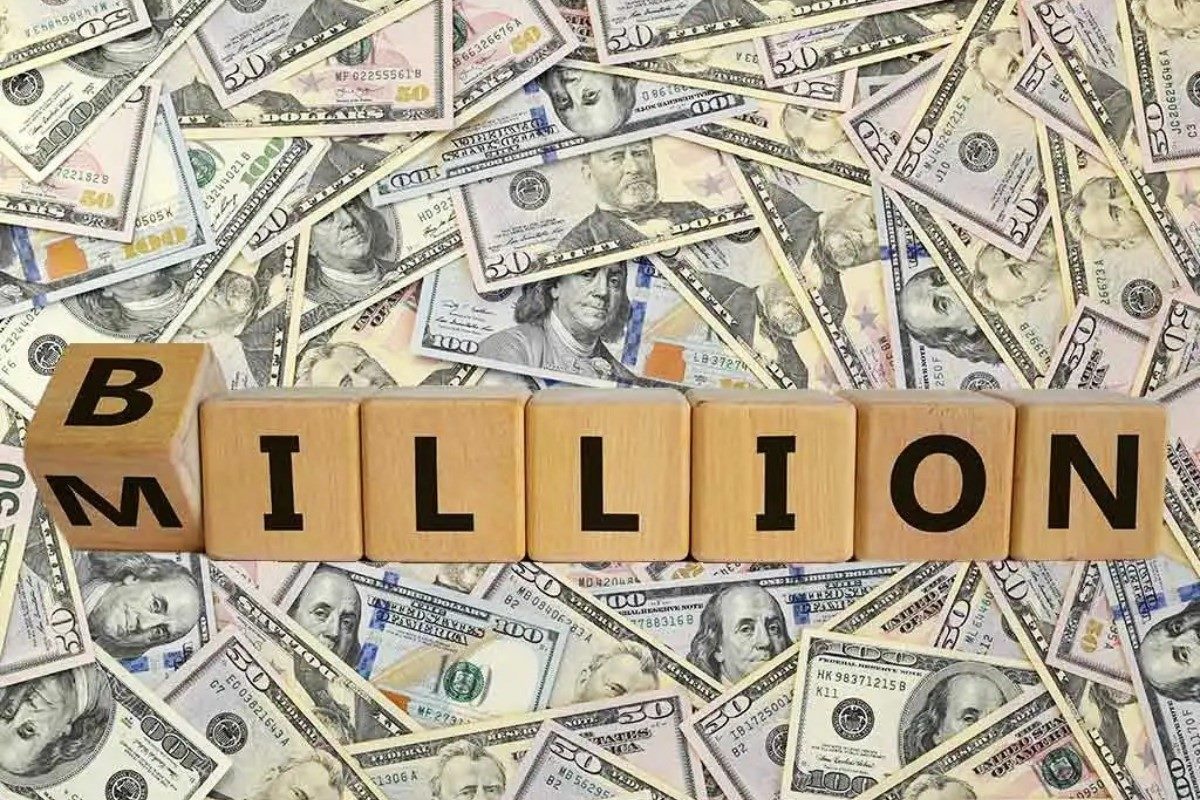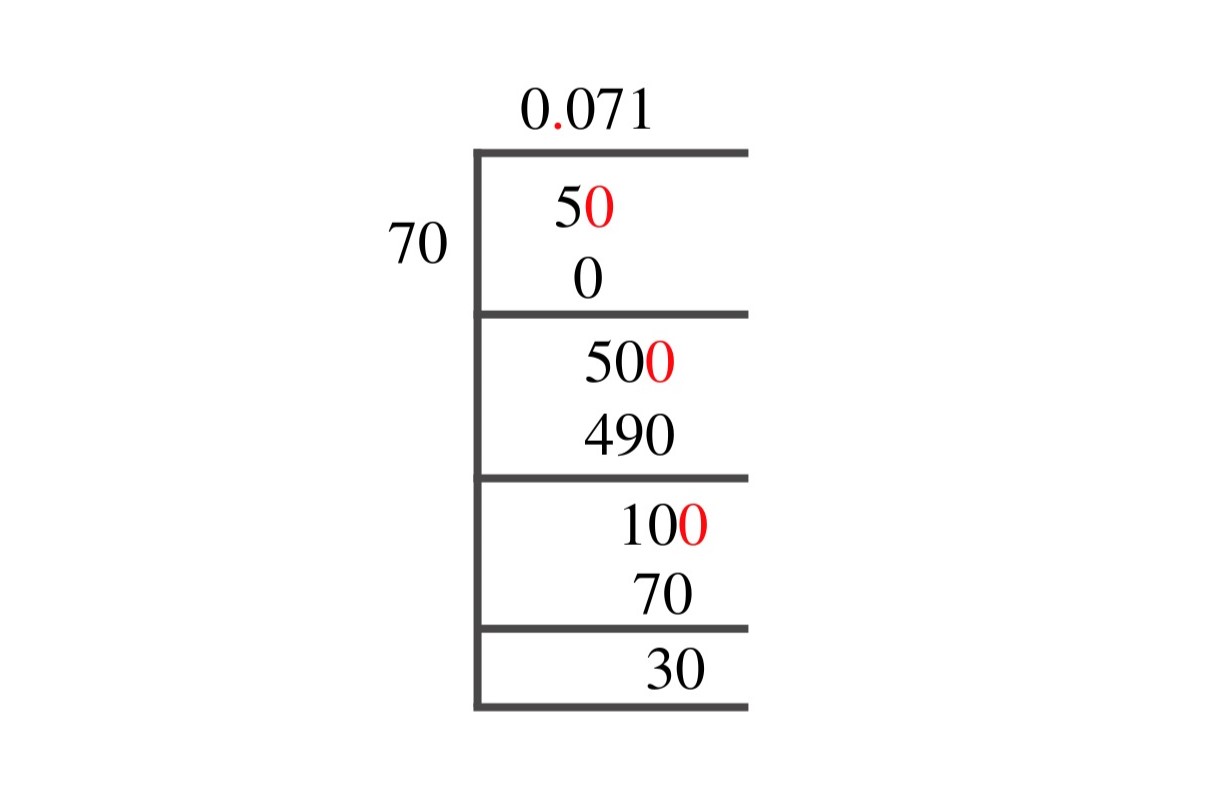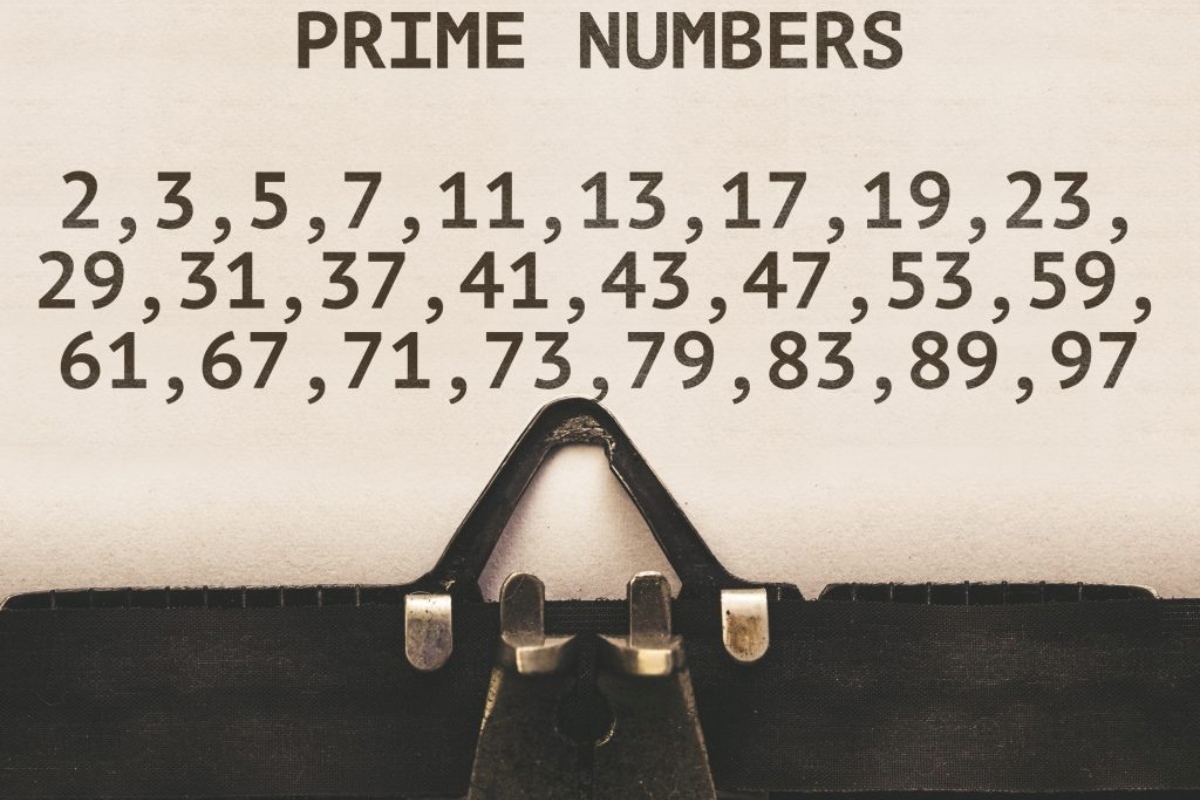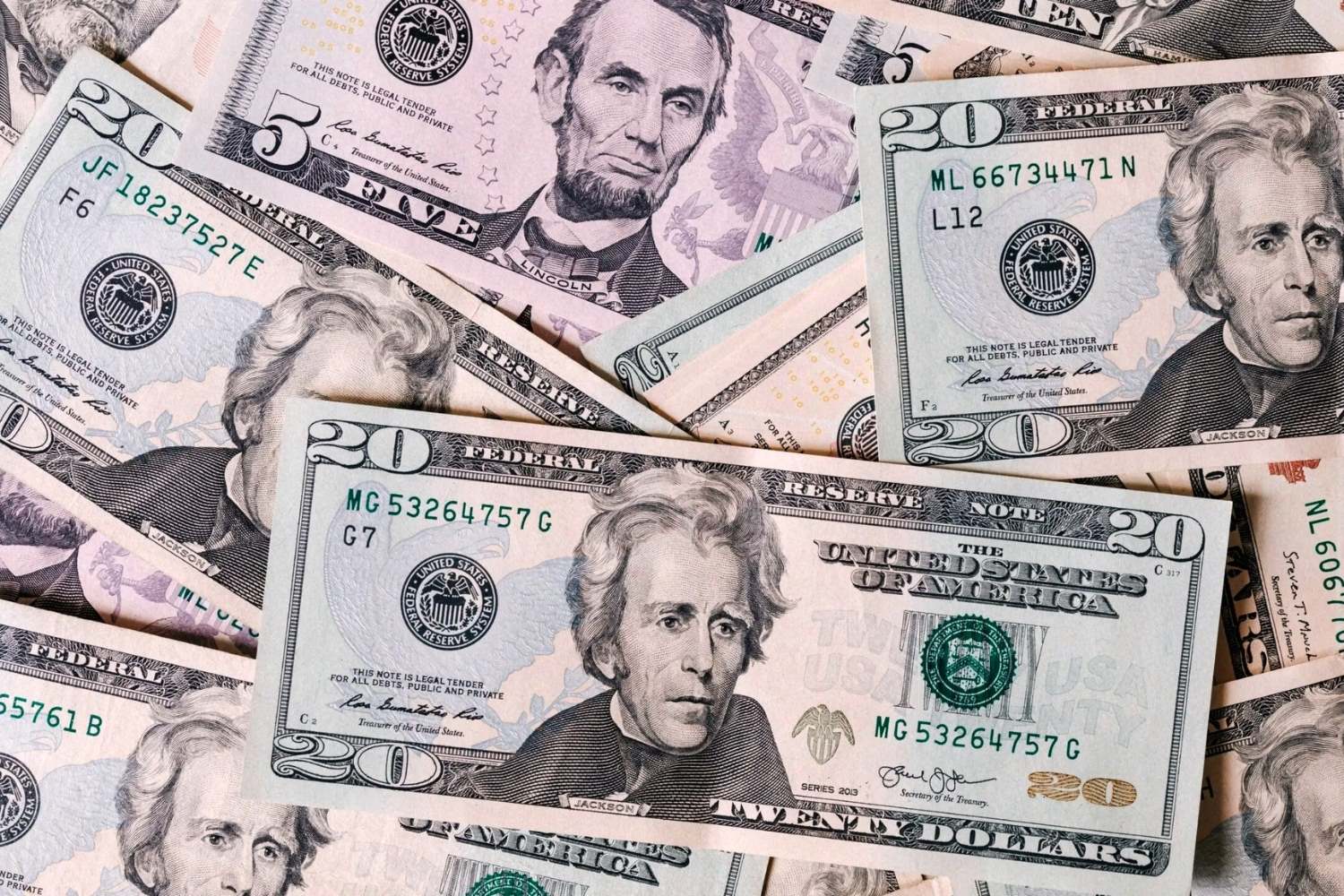Home>Mathematics>The Mind-Boggling Number Series You Won’t Believe!
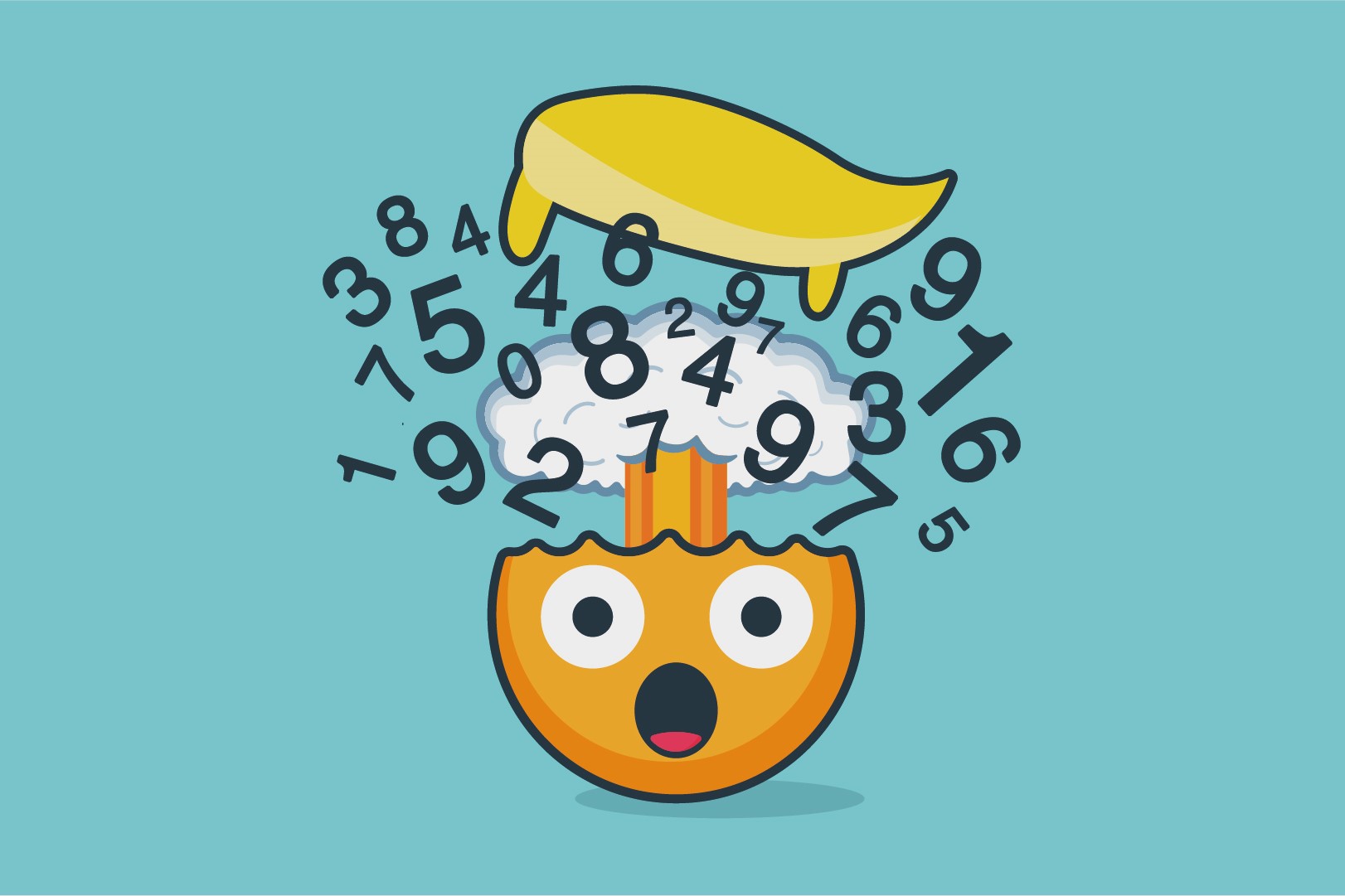

Mathematics
The Mind-Boggling Number Series You Won’t Believe!
Published: January 6, 2024
Discover the mind-boggling number series that will leave you amazed! Explore the fascinating world of mathematics and uncover the unbelievable patterns.
(Many of the links in this article redirect to a specific reviewed product. Your purchase of these products through affiliate links helps to generate commission for Noodls.com, at no extra cost. Learn more)
Table of Contents
Introduction
Welcome to the fascinating world of mind-boggling number series! Numbers are not just abstract symbols; they hold incredible patterns and relationships that have intrigued mathematicians and enthusiasts for centuries. From the famous Fibonacci sequence to the enigmatic Pi sequence and the mysterious Lucas numbers, these numerical patterns have captivated the human mind with their intriguing properties and applications in various fields.
In this article, we will embark on an exhilarating journey through some of the most captivating number series that have perplexed and amazed mathematicians and number enthusiasts alike. We will unravel the secrets behind these sequences, explore their significance, and delve into the mesmerizing patterns they exhibit. Prepare to be astounded as we unravel the mystique surrounding these extraordinary number series.
Let's venture into the mesmerizing realm of mathematical patterns and sequences, where numbers come alive with their enchanting properties and connections. Join us as we unravel the secrets of the Fibonacci sequence, delve into the enigmatic world of prime numbers, explore the transcendental Pi sequence, and uncover the allure of the golden ratio. Get ready to be mesmerized by the captivating world of number series that defy conventional understanding and ignite the imagination of mathematicians and enthusiasts alike.
The Fibonacci Sequence
The Fibonacci sequence is a mesmerizing series of numbers that has captivated mathematicians, artists, and nature enthusiasts for centuries. It all begins with two simple numbers: 0 and 1. From there, each subsequent number in the sequence is the sum of the two preceding numbers. Thus, the sequence unfolds as follows: 0, 1, 1, 2, 3, 5, 8, 13, 21, 34, and so on, creating an enchanting pattern that seems to echo throughout the natural world.
This seemingly simple sequence holds a profound significance in various realms, from mathematics to art, architecture, and even nature itself. The mesmerizing patterns of the Fibonacci sequence can be found in the spirals of seashells, the arrangement of leaves on a stem, and the mesmerizing swirls of galaxies. This pervasive presence has led to the Fibonacci sequence being hailed as a symbol of natural harmony and aesthetic beauty.
The allure of the Fibonacci sequence extends beyond its visual appeal. Its mathematical properties have fascinated scholars for centuries, leading to a myriad of intriguing discoveries. One of the most astonishing features of the Fibonacci sequence is its connection to the golden ratio, a mathematical constant that has been revered for its aesthetic properties and prevalence in art, architecture, and nature.
As the Fibonacci sequence progresses, the ratio of consecutive numbers approaches the golden ratio, approximately 1.618. This captivating connection has inspired artists, architects, and designers to incorporate the golden ratio into their creations, believing it to evoke a sense of balance and aesthetic harmony.
The Fibonacci sequence also exhibits remarkable properties when applied to various mathematical and computational concepts. It has been utilized in algorithms, number theory, and even financial modeling, showcasing its versatile and profound impact across diverse fields.
In essence, the Fibonacci sequence transcends the boundaries of mathematics and permeates the realms of art, nature, and human creativity. Its enchanting properties and profound connections continue to inspire awe and fascination, serving as a testament to the mesmerizing allure of mathematical patterns in the tapestry of our world.
The Prime Number Series
The prime number series is a captivating and enigmatic sequence that has intrigued mathematicians and number enthusiasts for centuries. Prime numbers, those divisible only by 1 and themselves, form the bedrock of number theory and have perplexed scholars with their elusive and fascinating properties. This extraordinary series begins with the simplest prime number, 2, and unfolds into an infinite array of numbers that defy conventional patterns and relationships.
One of the most captivating aspects of prime numbers is their fundamental role in the field of cryptography. The unique properties of prime numbers, particularly their resistance to factorization, have made them indispensable in the realm of secure communication and data encryption. The utilization of prime numbers in cryptographic algorithms has revolutionized the way information is safeguarded, highlighting the profound practical significance of these seemingly abstract mathematical entities.
The distribution of prime numbers has also been a subject of intense study and conjecture. Mathematicians have delved into the intricate patterns and irregularities within the prime number series, seeking to unravel the mysteries of their distribution across the number line. The prime number theorem, formulated by mathematician Jacques Hadamard and independently by Charles de la Vallée-Poussin, provides a remarkable insight into the asymptotic behavior of prime numbers, shedding light on their density and distribution as the magnitude of numbers increases.
The enigmatic nature of prime numbers extends beyond their distribution and cryptographic significance. They have been the subject of numerous conjectures and unsolved problems, including the Riemann hypothesis, which posits profound connections between the distribution of prime numbers and the behavior of the Riemann zeta function. This enduring mystery underscores the profound depth and complexity inherent in the prime number series, captivating mathematicians and inspiring a relentless pursuit of understanding.
Prime numbers also play a pivotal role in the field of number theory, serving as the building blocks for a myriad of mathematical concepts and theorems. Their unique properties have sparked countless investigations and discoveries, enriching the landscape of mathematical knowledge and inspiring awe and fascination among scholars and enthusiasts alike.
In essence, the prime number series stands as a testament to the profound depth and enigmatic allure of mathematical patterns. Its significance transcends the realm of pure mathematics, permeating cryptography, number theory, and the uncharted territories of unsolved conjectures. The prime number series continues to captivate the human mind with its mesmerizing properties, serving as an enduring symbol of the captivating mysteries that lie within the realm of numbers.
The Pi Sequence
The Pi sequence, derived from the mathematical constant π (pi), is a captivating and enigmatic series that has intrigued mathematicians, scientists, and enthusiasts for centuries. Pi, defined as the ratio of a circle's circumference to its diameter, is an irrational number with an infinite decimal expansion that never repeats. This remarkable property has imbued pi with an aura of mystery and fascination, making it a symbol of mathematical transcendence and infinite complexity.
The decimal representation of pi begins with 3.14159 and unfolds into an endless string of non-repeating digits, defying conventional patterns and eluding precise determination. This infinite and non-repeating nature has captivated mathematicians, leading to numerous efforts to calculate and memorize as many decimal places of pi as possible. The quest for the digits of pi has spurred the development of computational algorithms and the utilization of advanced computing technologies, reflecting the enduring allure and significance of this captivating mathematical constant.
The significance of the pi sequence extends far beyond its decimal expansion. Pi plays a fundamental role in geometry, trigonometry, and a myriad of scientific and engineering disciplines. Its prevalence in the measurement of circles, spheres, and curved surfaces underscores its indispensable role in the understanding and application of mathematical principles in the physical world.
The transcendental nature of pi, characterized by its infinite and non-repeating decimal expansion, has also sparked profound philosophical and intellectual contemplation. The quest to comprehend the true nature of pi and its infinite decimal representation has led to philosophical inquiries into the nature of infinity, the limits of human understanding, and the enigmatic properties of irrational numbers.
Furthermore, pi has been a subject of fascination in popular culture, inspiring artistic expressions, literary works, and cultural references that celebrate its enduring significance in the realm of mathematics and beyond. Its enigmatic properties and pervasive presence in the natural world have elevated pi to a symbol of infinite complexity and the boundless mysteries that lie within the realm of numbers.
In essence, the pi sequence stands as a testament to the profound depth and captivating allure of mathematical constants. Its significance transcends the realm of pure mathematics, permeating diverse fields of knowledge and inspiring contemplation, exploration, and admiration. The pi sequence continues to captivate the human mind with its mesmerizing properties, serving as an enduring symbol of the captivating mysteries that lie within the realm of numbers.
The Golden Ratio
The golden ratio, often denoted by the Greek letter φ (phi), is a captivating and enigmatic mathematical constant that has fascinated scholars, artists, and architects for millennia. Defined as the ratio of two quantities where the ratio of the sum to the larger quantity is equal to the ratio of the larger quantity to the smaller one, the golden ratio possesses remarkable properties that have permeated diverse fields, from art and architecture to nature and aesthetics.
One of the most intriguing aspects of the golden ratio is its pervasive presence in the natural world. From the mesmerizing spirals of seashells to the arrangement of petals in a flower, the proportions dictated by the golden ratio can be found in various elements of the natural world. This prevalence has led to the golden ratio being hailed as a symbol of natural harmony and aesthetic beauty, evoking a sense of balance and proportion that resonates with the human perception of visual appeal.
In the realm of art and architecture, the golden ratio has been revered for its aesthetic properties and its ability to evoke a sense of visual harmony. Throughout history, artists and architects have incorporated the golden ratio into their creations, believing it to imbue their works with a timeless and transcendent allure. The Parthenon in Athens, the paintings of Leonardo da Vinci, and the compositions of classical music maestros have been imbued with the proportions dictated by the golden ratio, reflecting its enduring significance in the realm of human creativity and expression.
The golden ratio's captivating properties extend beyond its aesthetic allure. It exhibits remarkable mathematical properties, including its connection to the Fibonacci sequence. As the Fibonacci sequence progresses, the ratio of consecutive numbers approaches the golden ratio, approximately 1.618. This captivating connection has inspired mathematicians, artists, and scholars to explore the profound implications of this relationship, leading to a myriad of discoveries and insights into the interconnectedness of mathematical patterns and natural phenomena.
Furthermore, the golden ratio has been a subject of profound contemplation and intellectual inquiry. Its prevalence in diverse fields, from mathematics to art and nature, has sparked philosophical inquiries into the nature of beauty, harmony, and proportion. The quest to comprehend the significance of the golden ratio has led to reflections on the human perception of aesthetics and the universal principles that underpin our appreciation of visual and spatial relationships.
In essence, the golden ratio stands as a testament to the profound depth and captivating allure of mathematical constants. Its significance transcends the realm of pure mathematics, permeating diverse fields of knowledge and inspiring contemplation, exploration, and admiration. The golden ratio continues to captivate the human mind with its mesmerizing properties, serving as an enduring symbol of the captivating mysteries that lie within the realm of numbers.
The Lucas Numbers
The Lucas numbers, a captivating and enigmatic sequence, hold a mesmerizing allure that parallels the renowned Fibonacci sequence. Named after the French mathematician Édouard Lucas, these numbers form a sequence that begins with 2 and 1, similar to the Fibonacci sequence, and unfolds into an intriguing pattern that has fascinated mathematicians and enthusiasts alike.
The Lucas numbers exhibit a captivating recursive relationship, akin to the Fibonacci sequence, where each subsequent number is the sum of the two preceding numbers. Thus, the sequence unfolds as follows: 2, 1, 3, 4, 7, 11, 18, 29, and so forth, creating a mesmerizing pattern that mirrors the captivating allure of the Fibonacci sequence. This recursive nature imbues the Lucas numbers with a profound sense of interconnectedness and mathematical elegance, captivating scholars with its intriguing properties.
Like the Fibonacci sequence, the Lucas numbers possess remarkable mathematical properties that have sparked profound investigations and insights into their significance and applications. They have been utilized in various mathematical concepts, including number theory, combinatorics, and algebraic structures, showcasing their versatile and profound impact across diverse fields of mathematics.
Furthermore, the Lucas numbers have been a subject of intense study in the realm of number theory, where scholars have delved into their properties, divisibility, and connections to other mathematical sequences. Their enigmatic properties and recursive nature have sparked numerous conjectures and investigations, enriching the landscape of mathematical knowledge and inspiring awe and fascination among scholars and enthusiasts alike.
The captivating allure of the Lucas numbers extends beyond their mathematical properties. They have found applications in diverse fields, including computer science, cryptography, and algorithmic complexity, where their recursive nature and unique properties have been leveraged to develop computational algorithms and cryptographic protocols, reflecting their enduring significance and practical relevance in modern contexts.
In essence, the Lucas numbers stand as a testament to the profound depth and captivating allure of mathematical sequences. Their significance transcends the realm of pure mathematics, permeating diverse fields of knowledge and inspiring contemplation, exploration, and admiration. The Lucas numbers continue to captivate the human mind with their mesmerizing properties, serving as an enduring symbol of the captivating mysteries that lie within the realm of numbers.
Conclusion
In conclusion, the mesmerizing world of number series has unveiled a captivating tapestry of mathematical patterns and sequences that transcend the boundaries of pure mathematics, permeating diverse fields and inspiring awe and fascination among scholars, artists, and enthusiasts alike. From the enchanting Fibonacci sequence to the enigmatic prime number series, the transcendent Pi sequence, the captivating allure of the golden ratio, and the intriguing Lucas numbers, each sequence embodies a profound depth and captivating allure that ignites the imagination and sparks contemplation into the boundless mysteries that lie within the realm of numbers.
These captivating number series have transcended the confines of abstract mathematics, permeating the natural world, art, architecture, cryptography, and diverse realms of human creativity and exploration. The Fibonacci sequence, with its mesmerizing patterns found in nature and its profound connections to the golden ratio, serves as a testament to the pervasive presence of mathematical harmony in the tapestry of the natural world.
The prime number series, with its enigmatic properties and significance in cryptography and number theory, stands as a symbol of the enduring mysteries and profound depth inherent in the realm of number theory. The Pi sequence, characterized by the transcendental nature of the mathematical constant π, has inspired reflection on the limits of human understanding, the nature of infinity, and the profound significance of irrational numbers in diverse scientific and engineering disciplines.
The golden ratio, revered for its aesthetic properties and prevalence in the natural world, has sparked contemplation on the universal principles of beauty, harmony, and proportion, permeating diverse fields from art and architecture to philosophy and aesthetics. Lastly, the captivating allure of the Lucas numbers, mirroring the captivating elegance of the Fibonacci sequence, has found applications in diverse fields, showcasing their versatile and profound impact across mathematics, computer science, and cryptography.
In essence, the captivating allure of these number series serves as a testament to the profound depth and enduring significance of mathematical patterns. They continue to captivate the human mind with their mesmerizing properties, serving as an enduring symbol of the captivating mysteries that lie within the realm of numbers, inspiring contemplation, exploration, and admiration. As we continue to unravel the enigmatic properties and profound connections within these number series, we embark on an exhilarating journey that transcends the confines of mathematical abstraction, delving into the boundless mysteries and captivating allure that lie within the mesmerizing world of number sequences.





